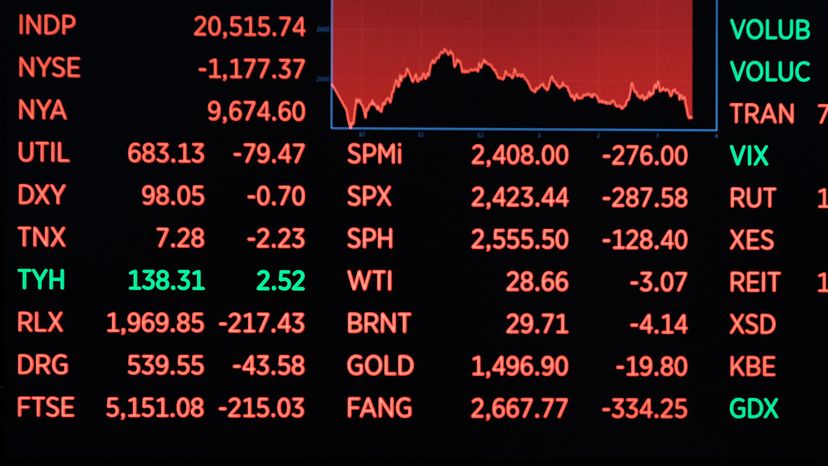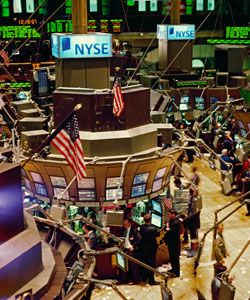
On Oct. 19, 1987, the day ominously known as "Black Monday," the Dow Jones Industrial Average (DJIA) plummeted a crippling 22.6 percent. To prevent such a violent single-day crash in the future, the U.S. Securities and Exchange Commission (SEC) implemented safety mechanisms meant to temporarily halt panicked sell-offs. The technical term is a "trading curb," but most market-watchers call them "circuit breakers."
For U.S. stock exchanges like the New York Stock Exchange (NYSE) and Nasdaq, circuit breakers are automatically triggered when the S&P 500 stock index drops a certain percentage from its previous day's closing price. Here are the three current levels of circuit breakers for U.S. stock markets and their consequences (NYSE and Nasdaq have the same levels):
Advertisement
- A "Level 1" circuit breaker is triggered by a 7 percent decrease from the S&P 500's closing price. Trading is automatically halted for 15 minutes.
- A "Level 2" circuit breaker is triggered by a 13 percent decrease from the S&P 500's closing price. Trading is automatically halted for 15 minutes.
- A "Level 3" circuit breaker is triggered by a 20 percent decrease from the S&P 500's closing price. Trading is automatically halted for the rest of the trading day.
The decline needs to happen before 3:25 p.m. in order for trading to halt (the markets close at 4 p.m.) These mandatory halts are supposed to give traders time to stop and analyze new market conditions so they can make more level-headed decisions about whether to buy or sell. Regulators hope that if investors pause for 15 minutes, they're less likely to panic.
The SEC set the current circuit breaker levels in 2012 after a stock scare known as the 2010 "Flash Crash," in which the Dow Jones dropped 9 percent in a matter of minutes. Before 2012, the circuit breaker thresholds were higher (10 percent, 20 percent and 30 percent) and were based on changes in the Dow not the S&P 500. (Trading was also halted for longer periods then.)
Since all stock trading is done electronically, circuit breakers are programmed into exchanges like the NYSE and Nasdaq and automatically enforced when the thresholds are reached.
Advertisement


